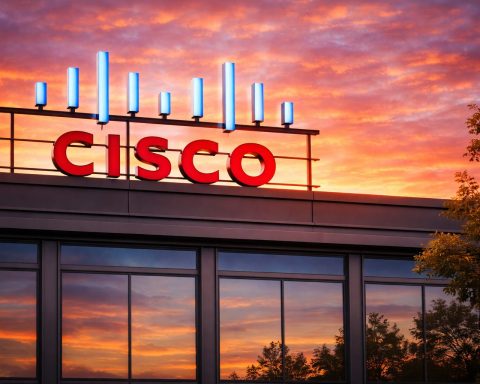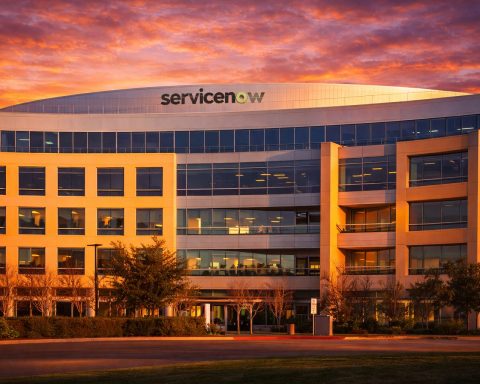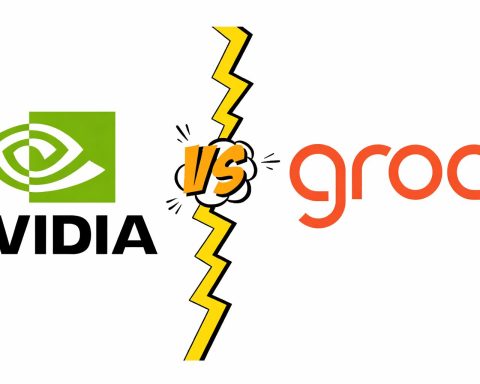- Google unveiled the Pixel 10 lineup in New York, with the base Pixel 10 starting at $799 and including a telephoto lens, while the Pixel 10 Pro foldable tops the line at $1,799 and prices were kept steady despite tariff concerns.
- Spotify plans to raise Premium to €11.99 in many markets starting next month as it targets 1 billion users and rolls out new features.
- The FTC warned Apple, Meta and X in an open letter that complying with Europe’s DSA or the UK Online Safety Act could erode American data privacy or free speech, signaling possible enforcement.
- DaVita’s July ransomware attack exposed about 2.7 million patients’ data, and remediation costs have topped $13 million.
- The U.S. government took a 9.9% equity stake in Intel, using about $10 billion in CHIPS Act grants, bought at roughly a 17% discount to market price, and is not applying the approach to TSMC or Micron.
- SpaceX launched CRS-33 on Aug 24, 2025, delivering over 5,000 pounds of supplies to the ISS and achieving a first-stage landing on the drone ship “A Shortfall of Gravitas” while marking SpaceX’s 100th launch of 2025.
- NASA unveiled CHAPEA, a 3D-printed Mars habitat in Houston for a 12-month Mars analog mission starting later in 2025 to study living in isolation.
- SpaceX attempted Starship Flight 10 on Aug 25 after a ground systems issue, the fourth Starship flight of 2025.
- Lamborghini canceled all-electric models for now, focusing on hybrids like the Fenomeno, a V12 hybrid priced at $3.5 million and already sold out.
- Britain added flexibilities to the Zero Emission Vehicle mandate in April, delaying EV quotas and allowing more petrol and hybrid car sales to ease compliance.
Consumer Electronics – Google’s Pixel 10 Flagships Unveiled
Pixel 10 Launches with AI Flair: Google introduced its latest Pixel 10 smartphone lineup at its annual event in New York, emphasizing new intelligent features and steady pricing [1] [2]. The base Pixel 10 now includes a telephoto lens and starts at $799, while a foldable Pixel 10 Pro model tops the range at $1,799, with Google notably not raising prices despite tariff concerns [3] [4]. The hardware upgrades were relatively modest compared to last year, as Google focused on integrating smarter software perks like a camera “photo coach” and proactive digital assistant. “A lot of the stuff they showed today would probably run almost exactly the same way on last year’s hardware. Their point is it’s not about just the hardware anymore,” observed Technalysis Research chief analyst Bob O’Donnell in reaction to Google’s AI-centric approach [5]. Tech analysts say the presentation – which even featured celebrities like Jimmy Fallon – was aimed at broadening Pixel’s mainstream appeal [6] [7]. “This feels more like a big push from a marketing perspective,” noted Carolina Milanesi of Creative Strategies, contrasting it with the bold hardware refresh seen in 2024 [8]. With Apple’s next iPhones expected in the fall, Google is clearly betting that smarter phones (not just faster chips) will win over consumers in 2025.
Media & Telecom – Spotify Plans Price Hikes and New Features
Spotify Eyes 1 Billion Users, Signals Price Rises: Streaming giant Spotify is preparing to raise subscription prices as it rolls out new services in its push toward 1 billion users, co-president Alex Norström told the Financial Times [9]. The company plans “new features and features” alongside the price increases, Norström said, framing the hikes as a natural part of its growth strategy. “Price increases and price adjustments… that’s part of our business toolbox and we’ll do it when it makes sense,” he explained [10]. According to Reuters, Spotify will bump its Premium individual plan to €11.99 (from €10.99) across many markets in regions including Europe, Asia, Latin America, the Middle East, and Africa starting next month [11]. The Swedish company notched its first annual profit last year after a combination of cost cuts and higher subscription prices [12]. By investing in new offerings (industry insiders speculate these could include enhanced podcast or audiobook services) and judiciously upping fees, Spotify aims to bolster margins without alienating listeners. So far, the market reaction has been positive, as investors see the pricing power as a sign of Spotify’s maturing business model [13].
Cybersecurity & Privacy – FTC’s Warning and a Massive Data Breach
FTC to Tech Firms: Don’t Undercut Privacy for Foreign Laws: In a stern message out of Washington, U.S. Federal Trade Commission Chair Andrew Ferguson warned major tech platforms against bowing to pressure from Europe’s Digital Services Act (DSA) and the UK’s Online Safety Act if compliance would erode Americans’ data privacy or free speech. In an open letter sent to companies from Apple to Meta to X (Twitter), Ferguson cautioned that censorship or encryption backdoors instituted at the behest of foreign governments could violate U.S. law [14] [15]. “American consumers do not reasonably expect to be censored to appease a foreign power and may be deceived by such actions,” Ferguson wrote, making clear the FTC could pursue enforcement if platforms weaken security or moderation standards for U.S. users to meet overseas rules [16]. The warning comes as transatlantic tensions rise over tech regulation – U.S. officials have even instructed diplomats to lobby against the EU’s sweeping content rules [17]. The takeaway for Silicon Valley: protecting user data and encryption isn’t just good PR – it’s a mandate from American regulators.
Healthcare Provider Hack Affects Millions: Meanwhile, a major ransomware attack earlier this year on dialysis provider DaVita underscored ongoing cyber threats. This week the U.S. Department of Health’s breach portal revealed that the attack, which hit DaVita’s systems in July, exposed sensitive data of approximately 2.7 million people [18]. DaVita had disclosed the incident in April but only now has the enormous scope become clear. The attackers encrypted parts of the company’s network, but DaVita managed to keep clinics running and patient care uninterrupted by shifting to backup processes [19] [20]. In a statement, DaVita confirmed the hackers accessed a database containing patient personal information and said “we’re notifying current and former patients and providing them with resources, including complimentary credit monitoring, to help safeguard their data” [21]. The breach response has already cost the company over $13 million in remediation and heightened security, on top of reputational damage [22]. Security experts note that this incident is part of a surge in cyberattacks on healthcare and critical infrastructure in 2025, and they urge firms to harden defenses as ransomware gangs grow more brazen.
Semiconductors & Geopolitics – U.S. Takes Stake in Intel, Rethinks Chip Funding
Washington’s $10B Bet on Intel: In an unprecedented intervention, the U.S. government is taking a 9.9% equity stake in Intel, America’s iconic chipmaker, as part of a deal to bolster domestic semiconductor manufacturing [23] [24]. President Donald Trump announced the agreement late last week, converting about $10 billion in CHIPS Act grants into a direct ownership share – a dramatic move aimed at reviving Intel’s foundry business and ensuring its new U.S. factories get built [25] [26]. Under the deal, Intel will receive the funds to expand production in the United States, while the government buys the stake at roughly a 17% discount to market price [27] [28]. The White House’s muscular approach has stunned some in the industry. It marks a sharp shift from prior policy – as Commerce Secretary Howard Lutnick put it, the previous administration was giving subsidy money “for free,” but “Donald Trump turned it into saying, ‘Hey, we want equity for the money’.” [29]. Lutnick bluntly told CNBC, “If we’re going to give you the money, we want a piece of the action for the American taxpayer.” [30].
No Equity Grab at TSMC or Micron: U.S. officials are clarifying that this new “public shareholder” approach will apply only to certain cases, not broadly to every chip firm. Despite earlier speculation, the administration has no plans to demand stakes in Taiwanese titan TSMC or memory maker Micron – companies that are already investing heavily in U.S. fabs [31] [32]. In fact, TSMC just confirmed a colossal $100 billion expansion of its Arizona facilities (on top of $65B announced previously) to build cutting-edge chips for clients like Apple and Nvidia [33]. Executives at TSMC had even privately warned they might return CHIPS Act funds rather than surrender equity if pressed [34]. By exempting such foreign investors from the equity rule, Washington seems keen not to scare off global chip capital. Still, the Intel deal sets a bold precedent. Some analysts say it could be a double-edged sword: taxpayers may profit if Intel bounces back, but it also raises concerns about government influence in tech firms. Global rivals are watching closely – the era of “free money” in chip subsidies is officially over, replaced by an era of strategic state-shareholding in critical tech companies.
Space & Aerospace – SpaceX’s Busy Weekend and NASA’s Mars Sim
SpaceX Launches Cargo and Eyes Starship Test:SpaceX capped a frenetic launch schedule with a pre-dawn liftoff on Sunday, Aug. 24, sending over 5,000 pounds of supplies to the International Space Station [35]. A Falcon 9 rocket carrying a Dragon cargo capsule blasted off from Cape Canaveral at 2:45 AM ET, marking SpaceX’s 33rd NASA resupply mission (CRS-33) [36] [37]. Minutes later the Falcon 9’s first stage stuck a perfect landing on the drone ship A Shortfall of Gravitas in the Atlantic, its 7th successful reuse [38]. The Dragon is scheduled to dock with the ISS on Monday, Aug. 25, and will even perform a test “reboost” of the station’s orbit – a task historically done by Russian spacecraft [39] [40]. SpaceX’s launch cadence in 2025 has been nothing short of astounding: the company’s 100th launch of the year occurred earlier this month, far ahead of last year’s pace [41]. “Falcon launch #100 of 2025. For reference… we hit 100 on Oct. 20 in 2024,” SpaceX VP Bill “Kiko” Dontchev noted, underscoring the record-breaking tempo [42]. Much of this activity is driven by Starlink missions; in fact, SpaceX is now responsible for the majority of all rocket launches globally this year – a remarkable domination of the commercial space sector [43].
All eyes are also on SpaceX’s next-generation Starship. The company attempted a Starship Flight 10 test launch on Sunday evening in south Texas, but a last-minute “ground systems issue” forced a scrub [44] [45]. Elon Musk’s team is now targeting Monday, Aug. 25 for another try, during a 7:30–8:30 PM ET window [46] [47]. This will be the fourth Starship flight of 2025 – and SpaceX is hoping it will be the first fully successful one of the year, after the last three tests ended in mid-air explosions [48]. The stakes are high: NASA has tapped Starship to land astronauts on the Moon in 2027, and SpaceX eventually wants to use it for Mars missions [49]. Each test flight is critical for ironing out the giant rocket’s kinks. Space fans around the world will be streaming the launch attempt Monday night, eager to see if SpaceX can finally stick the landing (literally) on its Starship program.
NASA’s Mars Habitat Trial: While SpaceX reaches for orbit, NASA is busy preparing humans for the journey to Mars – right here on Earth. Over the weekend, the space agency showed off a 3D-printed Mars simulation habitat in Houston that will house volunteers for a year-long mock Mars mission starting soon [50]. The facility, known as CHAPEA (Crew Health and Performance Exploration Analog), is part of NASA’s second such Mars analog experiment to study how humans cope with long-term isolation and resource limitations. Reporters touring the habitat on Aug. 22 saw a fully enclosed living space fabricated with industrial 3D printers, designed to mimic the Red Planet’s conditions [51]. The volunteer crew will begin their 12-month stint living and working in this faux-Mars outpost later this year, conducting experiments and even simulated spacewalks. NASA officials say insights from CHAPEA will help them design life-support systems and protocols for real Mars missions in the 2030s. As one NASA engineer quipped, “We’re going to learn a lot about living on Mars – without leaving Texas.” The innovative 3D construction techniques used for the habitat might even be employed on Mars in the future to “print” infrastructure using local materials [52]. From orbital launches to Mars-bound simulations, the past 48 hours in space tech showed humanity taking bold strides on multiple fronts.
Automotive Tech – EV Pushback from Supercars to Policy
Lamborghini: No Full EVs If Customers Don’t Want Them: In the world of supercars, Lamborghini made waves by tapping the brakes on its electric vehicle plans. CEO Stephan Winkelmann revealed that the famed Italian automaker has canceled its previously planned all-electric models for now, responding to resistance from its clientele [53] [54]. Enthusiasts of the brand have been clamoring for the roar of traditional engines, and Lambo’s elite buyers aren’t ready to trade V12 gasoline engines for silent batteries. “We could do a very powerful, very fast fully electric car, but it’s not about what we are able to do – it’s about fulfilling the dreams of customers,” Winkelmann told ABC News. “The customers want internal combustion engines.” [55]. Lamborghini hasn’t abandoned electrification entirely – it’s rolling out more hybrid models (the new Fenomeno supercar unveiled last week is a V12 hybrid priced at $3.5 million, already sold out) and the next-gen Urus SUV will be a plug-in hybrid [56] [57]. But for the foreseeable future, the company is postponing any pure EV. Winkelmann noted that industry-wide, “acceptance of electric cars is flattening… even more true for supercars,” and said as long as regulations allow, Lamborghini will keep offering throaty combustion engines to meet buyer demand [58] [59]. This stance underscores a broader trend: even as mass-market EV sales grow, the ultra-luxury performance segment isn’t convinced that battery-powered hypercars can capture the same emotion (or sound) as their fuel-burning predecessors.
UK Eases Up on EV Mandates: A similar theme of EV transition pushback played out in policy news. In Britain, internal documents revealed that major automakers BMW, Jaguar Land Rover, Toyota, and Nissan successfully lobbied the government to water down ambitious electric vehicle sales rules [60] [61]. The UK’s Zero Emission Vehicle (ZEV) mandate, set by the previous government, would have forced carmakers to rapidly increase the percentage of EVs in their sales or face hefty fines. Carmakers warned that sticking to those targets would “materially damage [their] ability to invest” in UK production lines and could cost thousands of jobs [62] [63]. “The UK mandate was much more radical… than equivalent rules in the EU or California,” BMW argued, noting that the British market is already challenging post-Brexit [64]. Earlier this year, the new government heeded these warnings: in April, the UK quietly added “flexibilities” to the ZEV rules allowing more petrol and hybrid car sales longer into the decade [65] [66]. This effectively delays the EV quotas that environmental groups wanted and gives legacy automakers breathing room to sell combustion models. The compromise sparked criticism from climate advisors, who warn it could increase emissions if petrol car sales stay higher [67] [68]. Nonetheless, industry advocates cheered the adjustment. They contend that mandating EV sales too fast was unsustainable – pointing to rising inventories and price cuts needed to entice buyers for electric models [69]. The UK’s experience may serve as a cautionary tale worldwide: even well-intentioned green mandates must balance economic realities, technological readiness, and consumer acceptance. For now, the road to an all-EV future is proving to have a few detours, both in the showroom and the halls of government.
Sources: Reuters; ABC News; The Guardian; Space.com; SpaceX; Financial Times [70] [71] [72] [73] [74] [75] [76] [77] [78] [79].
References
1. www.reuters.com, 2. www.reuters.com, 3. www.reuters.com, 4. www.reuters.com, 5. www.reuters.com, 6. www.reuters.com, 7. www.reuters.com, 8. www.reuters.com, 9. www.reuters.com, 10. www.reuters.com, 11. www.reuters.com, 12. www.reuters.com, 13. www.reuters.com, 14. www.theregister.com, 15. www.theregister.com, 16. www.theregister.com, 17. www.theregister.com, 18. www.reuters.com, 19. www.reuters.com, 20. www.reuters.com, 21. www.reuters.com, 22. www.reuters.com, 23. www.reuters.com, 24. www.reuters.com, 25. www.reuters.com, 26. www.reuters.com, 27. www.reuters.com, 28. www.reuters.com, 29. www.reuters.com, 30. www.reuters.com, 31. www.reuters.com, 32. www.reuters.com, 33. www.reuters.com, 34. www.reuters.com, 35. www.space.com, 36. www.space.com, 37. www.space.com, 38. www.space.com, 39. www.space.com, 40. www.space.com, 41. ts2.tech, 42. ts2.tech, 43. ts2.tech, 44. www.space.com, 45. www.space.com, 46. www.space.com, 47. www.space.com, 48. www.space.com, 49. www.space.com, 50. www.reuters.com, 51. www.reuters.com, 52. ts2.tech, 53. abcnews.go.com, 54. abcnews.go.com, 55. abcnews.go.com, 56. abcnews.go.com, 57. abcnews.go.com, 58. abcnews.go.com, 59. abcnews.go.com, 60. www.theguardian.com, 61. www.theguardian.com, 62. www.theguardian.com, 63. www.theguardian.com, 64. www.theguardian.com, 65. www.theguardian.com, 66. www.theguardian.com, 67. www.theguardian.com, 68. www.theguardian.com, 69. www.theguardian.com, 70. www.reuters.com, 71. www.reuters.com, 72. www.theregister.com, 73. www.reuters.com, 74. www.reuters.com, 75. www.reuters.com, 76. www.space.com, 77. ts2.tech, 78. abcnews.go.com, 79. www.theguardian.com










